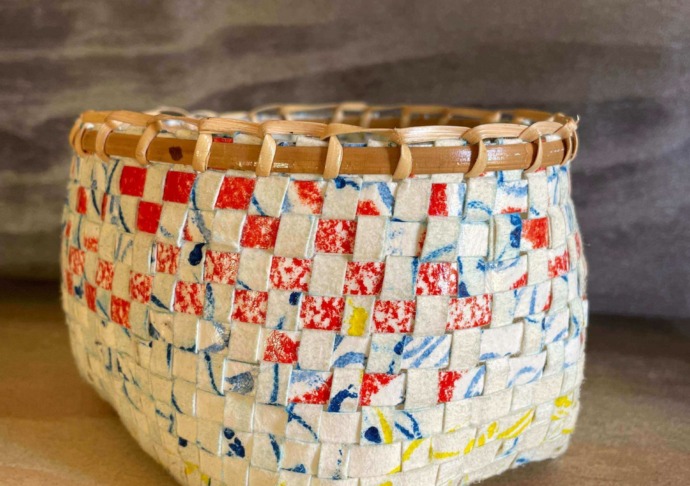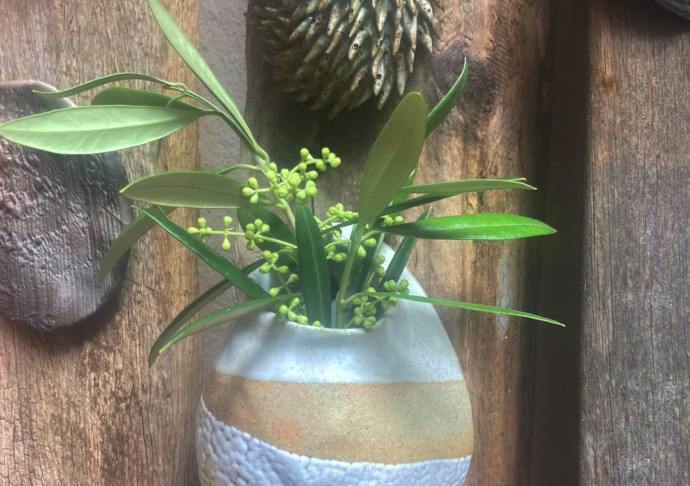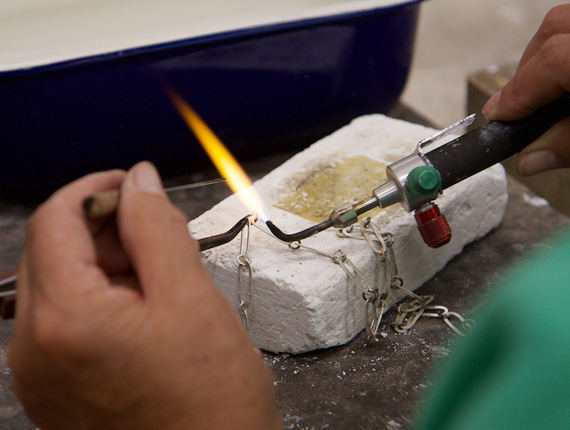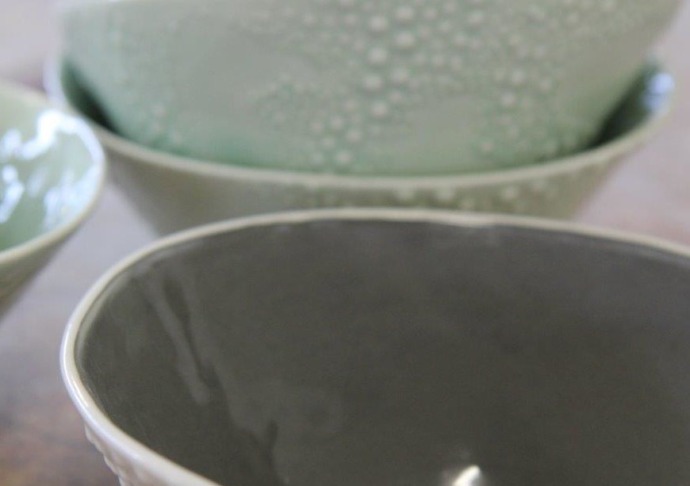
Weaving Paper Vessels
Using the basketry technique of plaiting, learn how to create a woven vessel using easily accessible artists' watercolour paper. After…
View Weaving Paper VesselsWant to be more sustainable and save our precious water? Better make an olla then!
Learn how to make your own 'olla' with a lid using terracotta clay and the coil building method under the expert guidance of Dee Jaeger. Your olla will hold approximately three to four litres of water. Your creation will be kiln fired to be useable in your garden. Olla’s can also be decorative and used as a garden feature when not buried in the soil. In this brand new course we will cover incising design, sgraffito, slip work, and surface burnishing
What is an olla watering system?
It is an unglazed porous bottle form that is buried in the garden amongst your plants. When you fill the olla with water, it slowly releases water into the soil to be drawn up by your plants roots when they need it.
Olla’s keep the soil from drying out, but never contribute to overwatering. If the soil is moist enough, water doesn’t seep out of the porous terracotta clay. As long as you keep the olla full, the plants always have exactly as much water as they need!
Materials:-
What to bring:-
Firing & Glazing:-
COVID
Please note, COVID restrictions may apply at the time of this course. By enrolling, you agree to abide by the restrictions at all times while onsite. Please visit the COVID Safe page on our website to read the most up to date information or visit wa.gov.au.
Building Access:
FAC is a heritage listed building with access limitations. If you have any special access requirements, please contact reception on 9432 9555 before enrolling in a course.
Students with Special Requirements:
If you or the person you are wishing to enrol has special requirements, please contact Reception on 9432 9555 or email [email protected] to discuss suitability and how we can help.
Dee Jaeger is a passionate about all aspects of pottery, from the properties of wet clay, to the colours and effects of glazing, to the firing itself.
Read More
Using the basketry technique of plaiting, learn how to create a woven vessel using easily accessible artists' watercolour paper. After…
View Weaving Paper Vessels
Learn how to manipulate clay with your hands to create a unique hanging vase or planter in this intensive one…
View Hanging Vases and Planters in Clay
Have you learnt to solder but would like to advance your skills? This one day intensive soldering course will increase…
View Intensive Soldering In A Day (9 June)
Open to any FAC ceramics student wanting to glaze and add finishing touches to their works made during earlier FAC…
View Glazing Session: Sunday 19 MayFremantle Arts Centre is situated at Walyalup on Whadjuk Nyoongar Boodjar. We acknowledge the Whadjuk people as the traditional owners and custodians of these lands and waterways and extend our respect to their Elders, past and present.
We offer our heartfelt gratitude to the Whadjuk community and to all Aboriginal and Torres Strait Islander people who continue to care for Country and share their knowledge – this generosity and wisdom helps us to understand and navigate Country safely and respectfully.